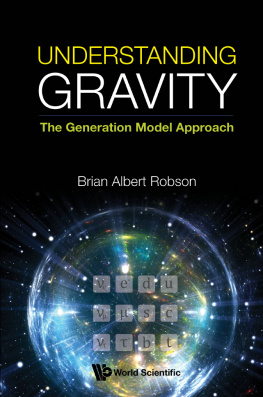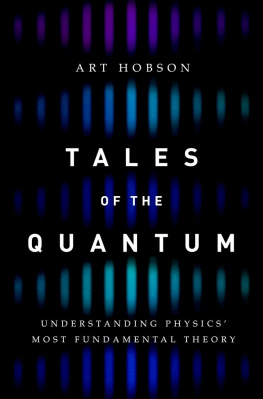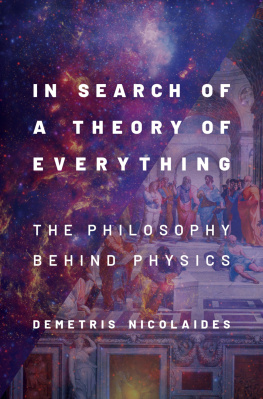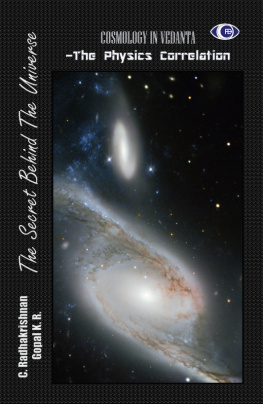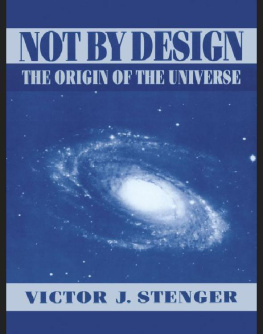Inflativity
The Origin of Time
General Unifying Theory of Universe Dynamics
Kevin J Warne
Contents
Introduction
Our current understanding of the universe encompasses Einsteins Theories of Relativity and the theories of Quantum Mechanics, but there are obvious shortfalls and anomalies that are impossible to rationalise and are a source of endless debate. A few examples are quantum indeterminacy, the fixed speed of light in a vacuum and lower fixed speed through a transparent medium. What is the underlying reason why light travels at the same speed regardless of motional perspective and what is the underlying significance of this particular speed in nature? We have just come to accept these as facts. Just what is the bigger picture and just what is really going on behind the cosmic scenes?
The nature of gravity, for instance, is only partially understood and postulates the existence of dark matter which there remains no direct evidence although its said to comprise 85% of the matter in the universe. The implications of universe expansion are not fully explored. There are a number of questionable concepts thrown up that are difficult to rationalise such as singularities having infinite density, an infinite number of parallel universes, dark energy, the ambiguous particle/wave nature of light, quantum entanglement and objects appearing to shrink in length as they move faster.
We just cant unify the theories of General Relativity and Quantum Mechanics based on current understanding. Relativity is demonstrable in the macro world but doesnt explain all behaviour at the subatomic scale so we are obviously missing a fuller picture. The nuclear forces cant be reconciled with the force of gravity. At the heart of the issue are some subtle but fundamental gaps in our understanding and this is the reason that standard theories taken at face value are so incongruent and we need a completely new framework with which to describe the universe.
As current understanding of the complete universe model seems to have reached an impasse as researchers are spending ever increasing resources trying to validate theories such as the existence of Dark Matter. The situation here is not unlike the principle of aether in the previous attempt to explain anomalies in the behaviour of light waves. What we really require is some serious re-thinking of first principles. This will inevitably lead to an initial degree of controversy, but this is a necessity if science is to progress, as has been shown many times throughout the ages.
We need to appreciate is that there is a vast amount of uncontroversial evidence already around us that points to the fact that our current model falls short and what is really required is a more advanced theory to fit everything together, not just an ever increasing supply of (very probably unattainable) evidence.
This work started with a series of fundamental questions about the nature of time and light, taking nothing for granted, but it soon became evident that what emerged was the key to a far greater explanation. It included a re-examination known evidence using proven observations, but from a new perspective incorporating the key driving concepts of universal expansion and how this relates to a revised concept of time.
Some ground-breaking concepts are introduced that relate to, and incorporate some classical concepts but, in developing our new framework we see much of what we previously saw as current understanding really requires a complete re-imagining.
The result is a startling and compelling new complete picture of reality that clearly answers many of the most fundamental questions including the age-old question what exactly is time?
To fully understand the concepts and implications of Inflativity its important to read from the beginning and carefully follow through the revelations as they are reasoned and developed. It is necessity to open ones imaginative mind and leave all preconceptions and rote learning behind as fundamentals are re-examined and established perspectives thoroughly challenged. Although a basic knowledge of Physics is a prerequisite no specific advanced knowledge or skills are required, just an open mind. There is a full Glossary of related terms at the end. The 3 basic mathematical derivations can be readily skipped as long as the conclusions are appreciated.
Enjoy the amazing adventure!
The 4th Dimension
Fundamental Concepts
Introduction
The aim of this section is to familiarise the reader with some important concepts that are integral to this theory of Inflativity. They are validated and considerably further advanced as we develop our reasoning and analysis to build the complete picture. The Glossary at the end can be consulted for a fully detailed contextual definition as derived throughout.
First we have to introduce the important concept of time that is not conceived directly as a 4th dimension but which is the product of a distance along such a dimension. Imagine our observable 3 dimensions represented by X, Y and Z axes on a graph paper (represented in 2 dimensions). Now imagine a fourth dimension which can be represented in our 3-dimensional universe as the graph paper having moved through space in a direction that is unrelated to any represented on the graph (in the same way that each direction on the graph is perpendicular to any other). The time element is proportional to the amount it has travelled along this dimension relative to a fixed point outside the paper.
The Fourth Dimension
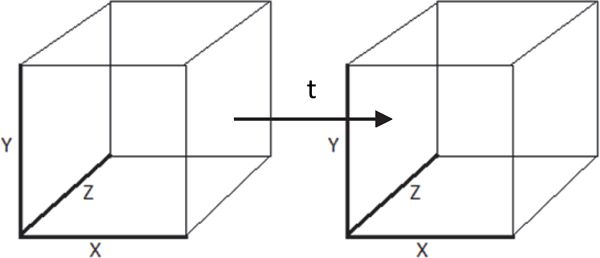
Visualising the Universal 4th Dimension
If we try and visualise the universe in 4 dimensions then our graph paper is the 2D surface of a hollow 3D sphere. The whole sphere is expanding geometrically but internal perception of distance remains the same, as any observer is also expanding along with everything else.
The process of expansion involves the radius sweeping through a given distance (as measured by internal perception of distance) in a given time period. Its important to conceive, however, that during the process of expansion internal perception of distance is continually compensating for the expansion, effectively hiding this from direct view, and a standard measurement of distance remains the same (although at a fundamental level its actually increasing).
Although this radial expansion would superficially be seen as a velocity, which we will call S, we will determine that there is a more fundamental meaning, as its really a fixed relationship between time and distance as experienced within our sphere.
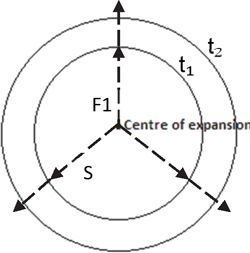
The universe in 4 Dimensions
In our model above t1 and t2 represent 2 sequential snapshots in time. Note this is only a conceptual model so we can visualise the 4th dimension. In constructing this model we have collapsed the 3D universe into a 2D representation so have lost full visibility of normally observable 3D space.
We will see later that expansion of 3D space is synonymous with the surface area increase of our model and movement in an (unseen) 4th dimension and hence radial expansion of our universe model. The fact that the 3 observable dimensions can be considered to be integral with another virtual 4th as far as human observation is concerned is the key here and expansion is actually occurring in all 4 dimensions simultaneously.
Next page



